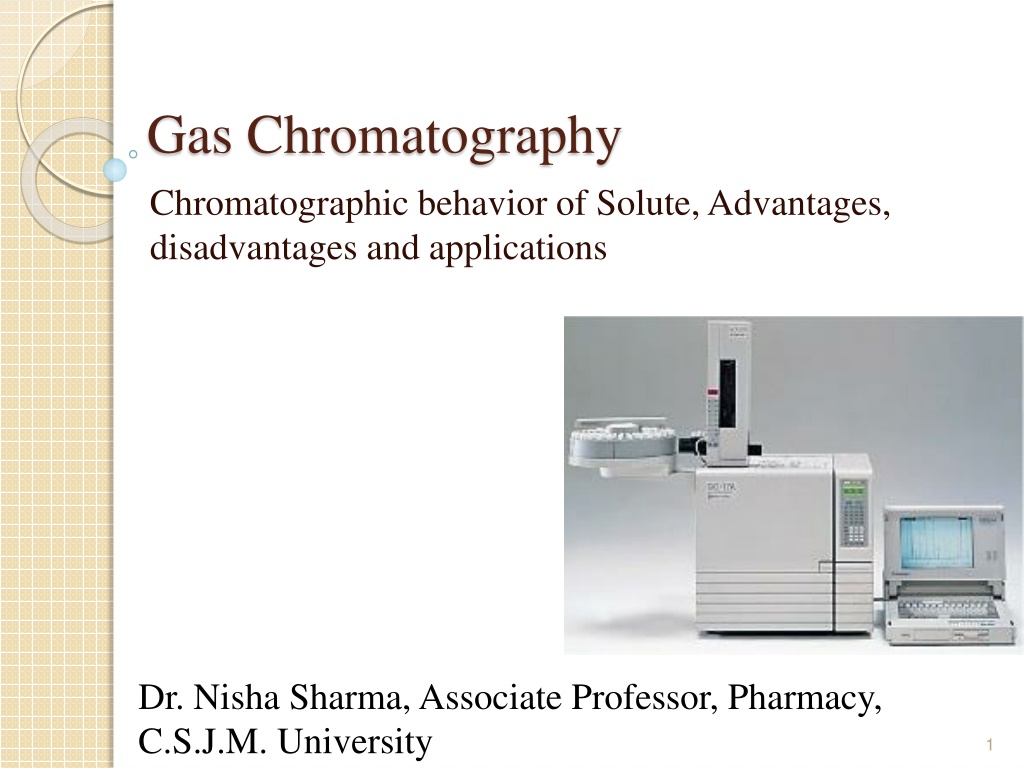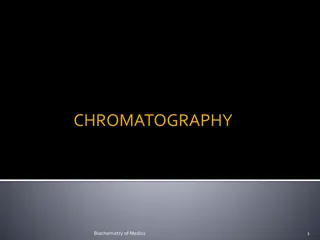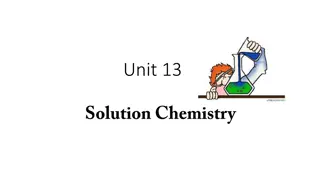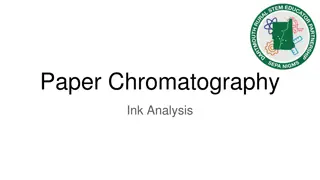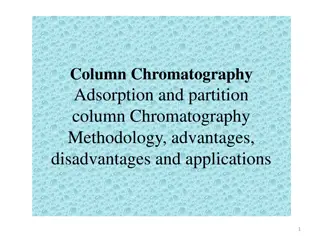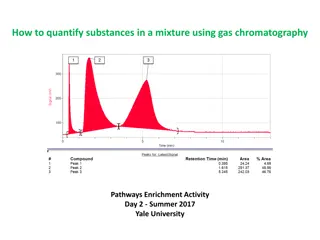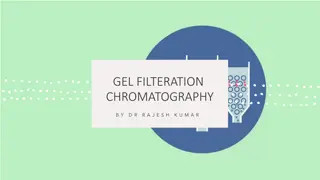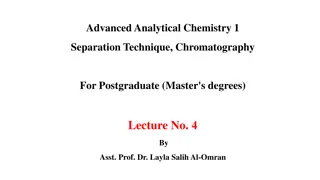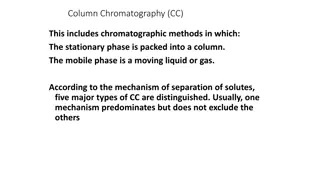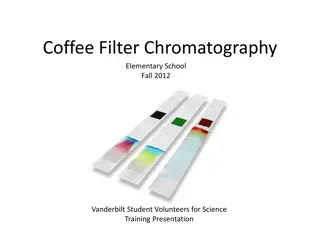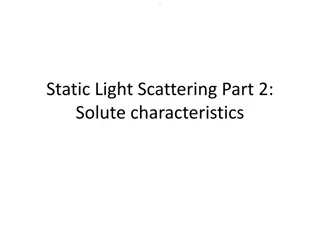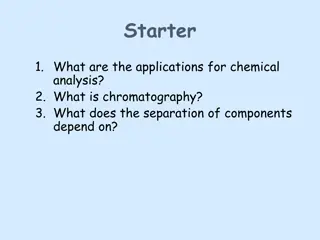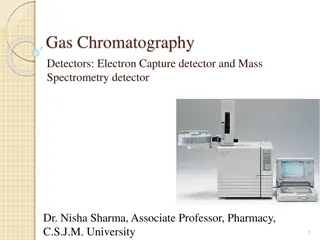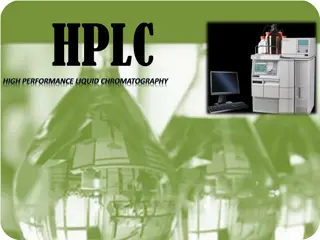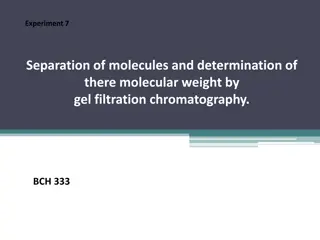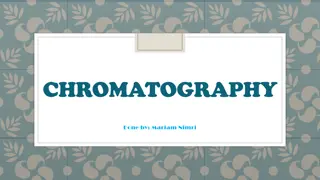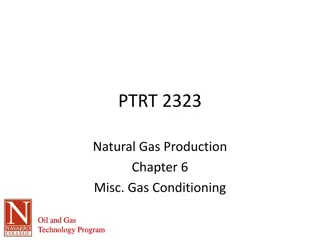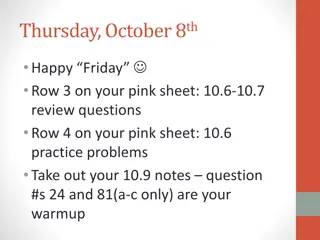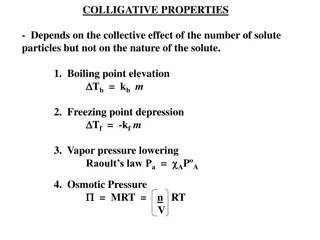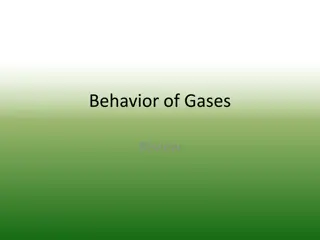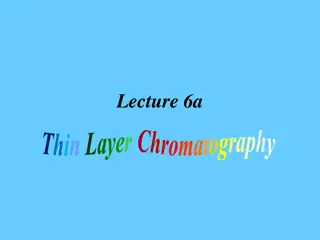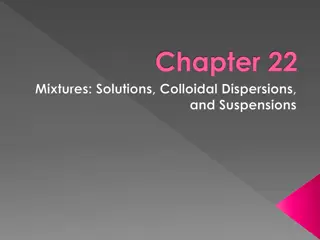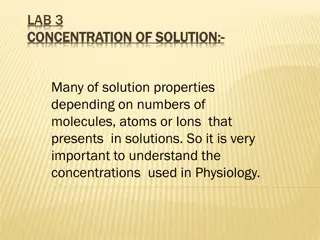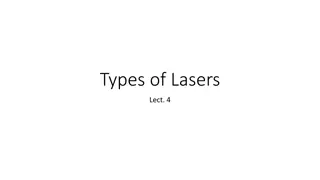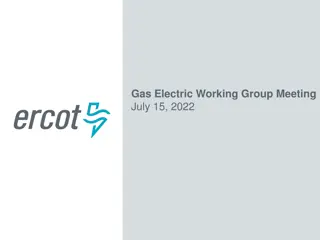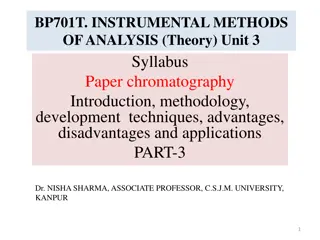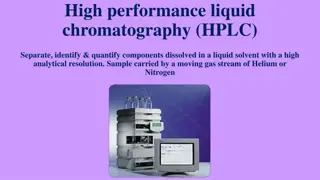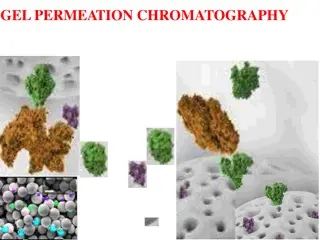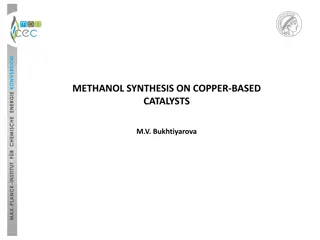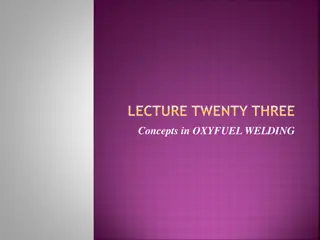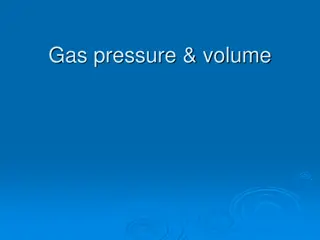Gas Chromatography: Behavior of Solute, Advantages, Disadvantages, and Applications
Gas chromatography involves the chromatographic behavior of solutes in various ways such as retention volume, retention time, and partition coefficient. It offers advantages like good separation, short analysis time, and universal detectors for organic compounds. However, there are disadvantages such as limited applications, low column efficiency, and the need for volatile samples. Gas chromatography is used for complex organic, metal organic, and biochemical separations, as well as for qualitative and quantitative analysis.
Download Presentation

Please find below an Image/Link to download the presentation.
The content on the website is provided AS IS for your information and personal use only. It may not be sold, licensed, or shared on other websites without obtaining consent from the author. Download presentation by click this link. If you encounter any issues during the download, it is possible that the publisher has removed the file from their server.
E N D
Presentation Transcript
Gas Chromatography Chromatographic behavior of Solute, Advantages, disadvantages and applications Dr. Nisha Sharma, Associate Professor, Pharmacy, C.S.J.M. University 1
Chromatographic behaviour of solutes Described in no. of ways Retention Vol. VR , Retention time: tR Partition coefficient K By varying stationary mobile phase combinations & operating parameters, degrees of retention can be varied from total retention to free migration 2
GLC ADVANTAGES 1.Very good separation 2.Time (analysis is short) 3.Small sample is needed - l 4.Good detection system available 5. Quantitatively analysis 6. Universal detectors for organic 7. Carrier gases can t be detected 9
GLC DISADVANTAGES 1. Less application- fixed Gas analysis 2. Low column efficiency 3. Sample must be volatile 4. Not good for thermolabile 5. Carrier gas must be pure 6. Does not respond to common inorganic comp 7. Mobile phase impurities can t be detected 10
DISADVANTAGES OF GAS CHROMATOGRAPHY Material has to be volatilized at 250 C without decomposition. Methylester Fatty Acids O O R C OH CH3OH H2SO4 + + R C O CH3 Volatile in Gas Chromatography Reflux O CH2 O C R O O CH3ONa 3 R C O CH3 Volatile in Gas Chromatography CH O C R CH3OH + O CH2 O C R 11
Applications As a tool for doing separations- complex organic, metal organic, & Biochemical systems For providing means for completion of an analysis Quanlitative identification: carried by using tR, VR , quantitative information- by using peak ht. or area 12
Applications In petroleum Industry- for analysis of crude petroleum products, gasoline, waxes, LPG, S, N compounds & unsaturation etc. In food industry: For color, flavour, detectors based on ECD. To determine residual solvents in spices, oleoresins, for pesticides in foods. In Biochemical & clinical fields: Blood gases, estrogens, vanilimandelic acid, Hydroxy cortico steroids etc. determined & analysed in medicine 13
Applications In cosmetic & perfumery: To determine composition of various cosmetics, quality of ingredients, Determination of styrene monomer, vinyl toulene, latex toulene di-isocyanate in paint, varnish, lacquer etc. In plastic Industry: To identify plastics, determination of esters in acrylic co- polymers, styrene monomers in styrene plastics, vinyl acetate in its co-polymers etc. 14
Applications For analysis of coal tar products For analysis of Alcoholic beverages For analysis of Fertilizers For determination of water in butane, gas, creams, emulsions, ointments, pastes etc. Pesticides in water, aquatic herbicide. 15
